You are using an out of date browser. It may not display this or other websites correctly.
You should upgrade or use an alternative browser.
You should upgrade or use an alternative browser.
- Joined
- 21 January 2015
- Messages
- 12,156
- Reaction score
- 16,373
- Joined
- 21 January 2015
- Messages
- 12,156
- Reaction score
- 16,373
- Joined
- 21 January 2015
- Messages
- 12,156
- Reaction score
- 16,373
- Joined
- 21 January 2015
- Messages
- 12,156
- Reaction score
- 16,373
NASA's TESS spacecraft has already found 2,200 possible planets
NASA's TESS spacecraft has already found 2,200 potential planets, surpassing its original goal and raising hope of finding Earth-like worlds.
Original NASA article.

Space Telescope Delivers the Goods: 2,200 Possible Planets - NASA Science
A newly published catalog reveals 2,200 new exoplanet candidates, found in data captured by TESS, the Transiting Exoplanet Survey Satellite.
Last edited:
- Joined
- 21 January 2015
- Messages
- 12,156
- Reaction score
- 16,373
The TESS Objects of Interest Catalog from the TESS Prime Mission
We present 2,241 exoplanet candidates identified with data from the Transiting Exoplanet Survey Satellite (TESS) during its two-year prime mission. We list these candidates in the TESS Objects of Interest (TOI) Catalog, which includes both new planet candidates found by TESS and previously-known planets recovered by TESS observations. We describe the process used to identify TOIs and investigate the characteristics of the new planet candidates, and discuss some notable TESS planet discoveries. The TOI Catalog includes an unprecedented number of small planet candidates around nearby bright stars, which are well-suited for detailed follow-up observations. The TESS data products for the Prime Mission (Sectors 1-26), including the TOI Catalog, light curves, full-frame images, and target pixel files, are publicly available on the Mikulski Archive for Space Telescopes.
 arxiv.org
arxiv.org
We present 2,241 exoplanet candidates identified with data from the Transiting Exoplanet Survey Satellite (TESS) during its two-year prime mission. We list these candidates in the TESS Objects of Interest (TOI) Catalog, which includes both new planet candidates found by TESS and previously-known planets recovered by TESS observations. We describe the process used to identify TOIs and investigate the characteristics of the new planet candidates, and discuss some notable TESS planet discoveries. The TOI Catalog includes an unprecedented number of small planet candidates around nearby bright stars, which are well-suited for detailed follow-up observations. The TESS data products for the Prime Mission (Sectors 1-26), including the TOI Catalog, light curves, full-frame images, and target pixel files, are publicly available on the Mikulski Archive for Space Telescopes.
The TESS Objects of Interest Catalog from the TESS Prime Mission
We present 2,241 exoplanet candidates identified with data from the Transiting Exoplanet Survey Satellite (TESS) during its two-year prime mission. We list these candidates in the TESS Objects of Interest (TOI) Catalog, which includes both new planet candidates found by TESS and previously-known...
- Joined
- 21 January 2015
- Messages
- 12,156
- Reaction score
- 16,373
Two new gaseous planets found by citizen scientists
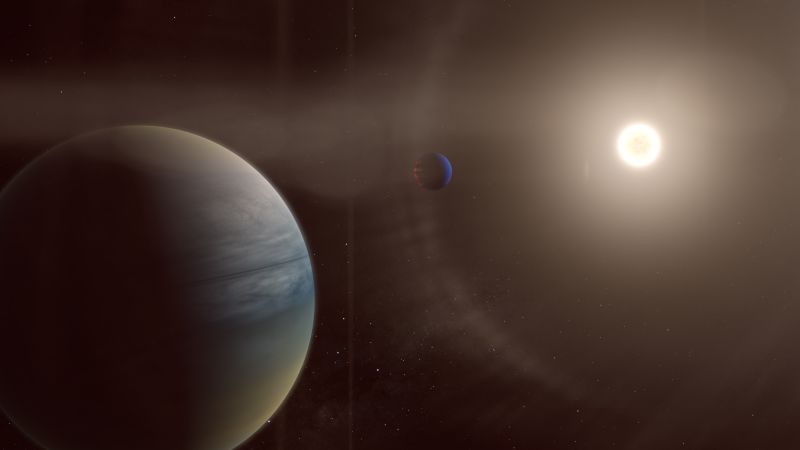
 edition.cnn.com
edition.cnn.com
Two new gaseous planets have been found orbiting a sun-like star 352 light-years from Earth -- and citizen scientists helped discover them while collaborating with astronomers.
The two exoplanets, which are planets that orbit stars outside of our solar system, are called planet b and planet c. They orbit a star known as HD 152843, which has a similar mass to our sun but is 1.5 times bigger and brighter.
Citizen scientists were able to help discover these planets by participating in Planet Hunters TESS. This NASA-funded project, available on the Zooniverse website, includes more than 29,000 people around the globe. It allows people to help search for exoplanets using data from NASA's Transiting Exoplanet Survey Satellite, or TESS mission.

Two new gaseous planets found by citizen scientists | CNN
Two new gaseous planets have been found orbiting a sun-like star 352 light-years from Earth. Citizen scientists helped discover them while collaborating with astronomers.
- Joined
- 21 January 2015
- Messages
- 12,156
- Reaction score
- 16,373
TESS Maps Red Giants Across the Sky
View: https://youtu.be/uZaRnyN0wp0
TESS Tracks a Giant’s Pulsations
View: https://youtu.be/jrI-7COKnic
Tuning Into a Trio of Red Giants
View: https://youtu.be/MRXC12BFStI
TESS Tracks a Giant’s Pulsations
Tuning Into a Trio of Red Giants
- Joined
- 21 January 2015
- Messages
- 12,156
- Reaction score
- 16,373
Populating the brown dwarf and stellar boundary: Five stars with transiting companions near the hydrogen-burning mass limit
We report the discovery of five transiting companions near the hydrogen-burning mass limit in close orbits around main sequence stars originally identified by the Transiting Exoplanet Survey Satellite (TESS) as TESS Objects of Interest (TOIs): TOI-148, TOI-587, TOI-681, TOI-746, and TOI-1213. Using TESS and ground-based photometry as well as radial velocities from the CORALIE, CHIRON, TRES, and FEROS spectrographs, we found the companions have orbital periods between 4.8 and 27.2 days, masses between 77 and 98 MJup, and radii between 0.81 and 1.66 RJup. These targets have masses near the uncertain lower limit of hydrogen core fusion (∼73-96 MJup), which separates brown dwarfs and low-mass stars. We constrained young ages for TOI-587 (0.2 ± 0.1 Gyr) and TOI-681 (0.17 ± 0.03 Gyr) and found them to have relatively larger radii compared to other transiting companions of a similar mass. Conversely we estimated older ages for TOI-148 and TOI-746 and found them to have relatively smaller companion radii. With an effective temperature of 9800 ± 200 K, TOI-587 is the hottest known main-sequence star to host a transiting brown dwarf or very low-mass star. We found evidence of spin-orbit synchronization for TOI-148 and TOI-746 as well as tidal circularization for TOI-148. These companions add to the population of brown dwarfs and very low-mass stars with well measured parameters ideal to test formation models of these rare objects, the origin of the brown dwarf desert, and the distinction between brown dwarfs and hydrogen-burning main sequence stars.
 arxiv.org
arxiv.org
We report the discovery of five transiting companions near the hydrogen-burning mass limit in close orbits around main sequence stars originally identified by the Transiting Exoplanet Survey Satellite (TESS) as TESS Objects of Interest (TOIs): TOI-148, TOI-587, TOI-681, TOI-746, and TOI-1213. Using TESS and ground-based photometry as well as radial velocities from the CORALIE, CHIRON, TRES, and FEROS spectrographs, we found the companions have orbital periods between 4.8 and 27.2 days, masses between 77 and 98 MJup, and radii between 0.81 and 1.66 RJup. These targets have masses near the uncertain lower limit of hydrogen core fusion (∼73-96 MJup), which separates brown dwarfs and low-mass stars. We constrained young ages for TOI-587 (0.2 ± 0.1 Gyr) and TOI-681 (0.17 ± 0.03 Gyr) and found them to have relatively larger radii compared to other transiting companions of a similar mass. Conversely we estimated older ages for TOI-148 and TOI-746 and found them to have relatively smaller companion radii. With an effective temperature of 9800 ± 200 K, TOI-587 is the hottest known main-sequence star to host a transiting brown dwarf or very low-mass star. We found evidence of spin-orbit synchronization for TOI-148 and TOI-746 as well as tidal circularization for TOI-148. These companions add to the population of brown dwarfs and very low-mass stars with well measured parameters ideal to test formation models of these rare objects, the origin of the brown dwarf desert, and the distinction between brown dwarfs and hydrogen-burning main sequence stars.
Populating the brown dwarf and stellar boundary: Five stars with transiting companions near the hydrogen-burning mass limit
We report the discovery of five transiting companions near the hydrogen-burning mass limit in close orbits around main sequence stars originally identified by the Transiting Exoplanet Survey Satellite (TESS) as TESS Objects of Interest (TOIs): TOI-148, TOI-587, TOI-681, TOI-746, and TOI-1213...
- Joined
- 21 January 2015
- Messages
- 12,156
- Reaction score
- 16,373
An accreting white dwarf displaying fast transitional mode switching
Abstract
Accreting white dwarfs are often found in close binary systems with orbital periods ranging from tens of minutes to several hours. In most cases, the accretion process is relatively steady, with significant modulations only occurring on timescales of ~days or longer1,2. Here we report the discovery of abrupt drops in the optical luminosity of the accreting white dwarf binary system TW Pictoris by factors up to 3.5 on timescales as short as 30 minutes. The optical light curve of this binary system obtained by the Transiting Exoplanet Survey Satellite (TESS) clearly displays fast switches between two distinct intensity modes that probably track the changing mass accretion rate onto the white dwarf. In the low mode, the system also displays magnetically gated accretion bursts3,4,5, which implies that a weak magnetic field of the white dwarf truncates the inner disc at the co-rotation radius in this mode. The properties of the mode switching observed in TW Pictoris appear analogous to those observed in transitional millisecond pulsars6,7,8,9,10, where similar transitions occur, although on timescales of ~tens of seconds. Our discovery establishes a previously unrecognized phenomenon in accreting white dwarfs and suggests a tight link to the physics governing magnetic accretion onto neutron stars.
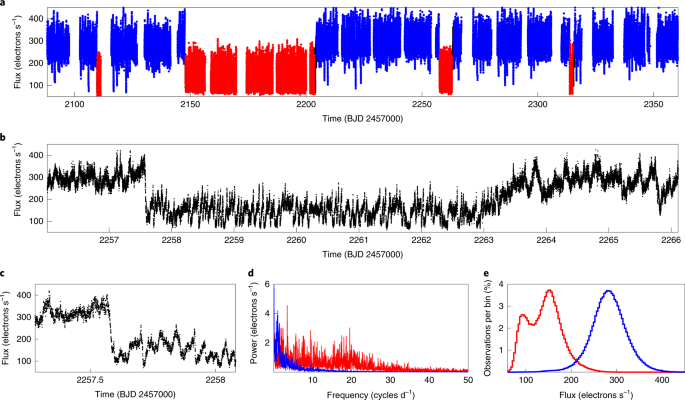
 www.nature.com
www.nature.com
Source: https://phys.org/news/2021-10-astronomers-white-dwarf.amp
Abstract
Accreting white dwarfs are often found in close binary systems with orbital periods ranging from tens of minutes to several hours. In most cases, the accretion process is relatively steady, with significant modulations only occurring on timescales of ~days or longer1,2. Here we report the discovery of abrupt drops in the optical luminosity of the accreting white dwarf binary system TW Pictoris by factors up to 3.5 on timescales as short as 30 minutes. The optical light curve of this binary system obtained by the Transiting Exoplanet Survey Satellite (TESS) clearly displays fast switches between two distinct intensity modes that probably track the changing mass accretion rate onto the white dwarf. In the low mode, the system also displays magnetically gated accretion bursts3,4,5, which implies that a weak magnetic field of the white dwarf truncates the inner disc at the co-rotation radius in this mode. The properties of the mode switching observed in TW Pictoris appear analogous to those observed in transitional millisecond pulsars6,7,8,9,10, where similar transitions occur, although on timescales of ~tens of seconds. Our discovery establishes a previously unrecognized phenomenon in accreting white dwarfs and suggests a tight link to the physics governing magnetic accretion onto neutron stars.

An accreting white dwarf displaying fast transitional mode switching - Nature Astronomy
From its optical light curve, the white dwarf in the binary system TW Pictoris appears to be switching between two different intensities of accretion on timescales of hours. This behaviour is reminiscent of that seen in transitional millisecond pulsars, where the switching occurs several times a...
Source: https://phys.org/news/2021-10-astronomers-white-dwarf.amp
- Joined
- 21 January 2015
- Messages
- 12,156
- Reaction score
- 16,373
TOI-2257 b: A highly eccentric long-period sub-Neptune transiting a nearby M dwarf
Thanks to the relative ease of finding and characterizing small planets around M dwarf stars, these objects have become cornerstones in the field of exoplanet studies. The current paucity of planets in long-period orbits around M dwarfs make such objects particularly compelling as they provide clues about the formation and evolution of these systems. In this study, we present the discovery of TOI-2257 b (TIC 198485881), a long-period (35 d) sub-Neptune orbiting an M3 star at 57.8pc. Its transit depth is about 0.4%, large enough to be detected with medium-size, ground-based telescopes. The long transit duration suggests the planet is in a highly eccentric orbit (e∼0.5), which would make it the most eccentric planet that is known to be transiting an M-dwarf star. We combined TESS and ground-based data obtained with the 1.0-m SAINT-EX, 0.60-m TRAPPIST-North and 1.2-m FLWO telescopes to find a planetary size of 2.2 R⊕ and an orbital period of 35.19 days. In addition, we make use of archival data, high-resolution imaging, and vetting packages to support our planetary interpretation. With its long period and high eccentricity, TOI-2257 b falls in a novel slice of parameter space. Despite the planet's low equilibrium temperature (∼ 256 K), its host star's small size (R∗=0.311±0.015) and relative infrared brightness (Kmag = 10.7) make it a suitable candidate for atmospheric exploration via transmission spectroscopy.
 arxiv.org
arxiv.org
Source:
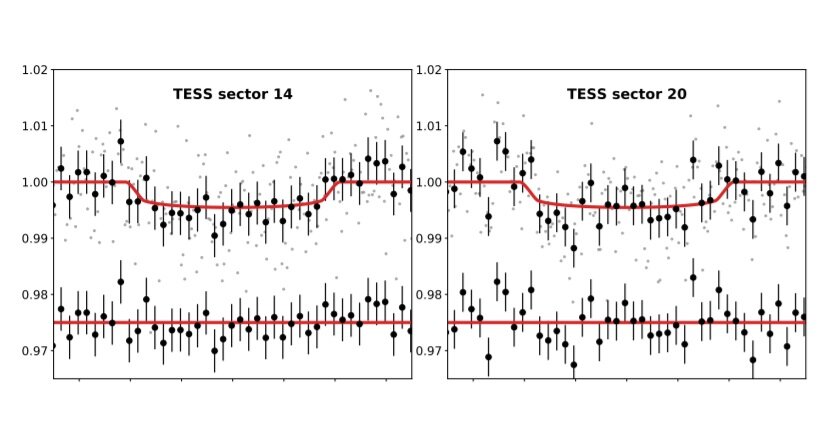
 phys.org
phys.org
Thanks to the relative ease of finding and characterizing small planets around M dwarf stars, these objects have become cornerstones in the field of exoplanet studies. The current paucity of planets in long-period orbits around M dwarfs make such objects particularly compelling as they provide clues about the formation and evolution of these systems. In this study, we present the discovery of TOI-2257 b (TIC 198485881), a long-period (35 d) sub-Neptune orbiting an M3 star at 57.8pc. Its transit depth is about 0.4%, large enough to be detected with medium-size, ground-based telescopes. The long transit duration suggests the planet is in a highly eccentric orbit (e∼0.5), which would make it the most eccentric planet that is known to be transiting an M-dwarf star. We combined TESS and ground-based data obtained with the 1.0-m SAINT-EX, 0.60-m TRAPPIST-North and 1.2-m FLWO telescopes to find a planetary size of 2.2 R⊕ and an orbital period of 35.19 days. In addition, we make use of archival data, high-resolution imaging, and vetting packages to support our planetary interpretation. With its long period and high eccentricity, TOI-2257 b falls in a novel slice of parameter space. Despite the planet's low equilibrium temperature (∼ 256 K), its host star's small size (R∗=0.311±0.015) and relative infrared brightness (Kmag = 10.7) make it a suitable candidate for atmospheric exploration via transmission spectroscopy.
TOI-2257 b: A highly eccentric long-period sub-Neptune transiting a nearby M dwarf
Thanks to the relative ease of finding and characterizing small planets around M dwarf stars, these objects have become cornerstones in the field of exoplanet studies. The current paucity of planets in long-period orbits around M dwarfs make such objects particularly compelling as they provide...
Source:

Astronomers discover a sub-Neptune exoplanet orbiting nearby star
Using NASA's Transiting Exoplanet Survey Satellite (TESS), an international team of astronomers has detected a sub-Neptune exoplanet orbiting a nearby M dwarf star. The newly found alien world, designated TOI-2257b is about two times larger than the Earth. The finding is reported in a paper...
- Joined
- 21 January 2015
- Messages
- 12,156
- Reaction score
- 16,373
This study re-confirms that Proxima b does not transit it’s host Star from our viewpoint, and in fact no transits at all were discovered in the data for any other planet that may exist in the system larger than the size of Mars.
No Transits of Proxima Centauri Planets in High-Cadence TESS Data
Proxima Centauri is our nearest stellar neighbor and one of the most well-studied stars in the sky. In 2016, a planetary companion was detected through radial velocity measurements. Proxima Centauri b has a minimum mass of 1.3 Earth masses and orbits with a period of 11.2 days at 0.05 AU from its stellar host, and resides within the star's Habitable Zone. While recent work has shown that Proxima Centauri b likely does not transit, given the value of potential atmospheric observations via transmission spectroscopy of the closest possible Habitable Zone planet, we reevaluate the possibility that Proxima Centauri b is a transiting exoplanet using data from the Transiting Exoplanet Survey Satellite (TESS). We use three sectors (Sectors 11, 12, and 38 at 2-minute cadence) of observations from TESS to search for planets. Proxima Centauri is an extremely active M5.5 star, emitting frequent white-light flares; we employ a novel method that includes modeling the stellar activity in our planet search algorithm. We do not detect any planet signals. We injected synthetic transiting planets into the TESS and use this analysis to show that Proxima Centauri b cannot be a transiting exoplanet with a radius larger than 0.4 R⊕. Moreover, we show that it is unlikely that any Habitable Zone planets larger than Mars transit Proxima Centauri.
 arxiv.org
arxiv.org
No Transits of Proxima Centauri Planets in High-Cadence TESS Data
Proxima Centauri is our nearest stellar neighbor and one of the most well-studied stars in the sky. In 2016, a planetary companion was detected through radial velocity measurements. Proxima Centauri b has a minimum mass of 1.3 Earth masses and orbits with a period of 11.2 days at 0.05 AU from its stellar host, and resides within the star's Habitable Zone. While recent work has shown that Proxima Centauri b likely does not transit, given the value of potential atmospheric observations via transmission spectroscopy of the closest possible Habitable Zone planet, we reevaluate the possibility that Proxima Centauri b is a transiting exoplanet using data from the Transiting Exoplanet Survey Satellite (TESS). We use three sectors (Sectors 11, 12, and 38 at 2-minute cadence) of observations from TESS to search for planets. Proxima Centauri is an extremely active M5.5 star, emitting frequent white-light flares; we employ a novel method that includes modeling the stellar activity in our planet search algorithm. We do not detect any planet signals. We injected synthetic transiting planets into the TESS and use this analysis to show that Proxima Centauri b cannot be a transiting exoplanet with a radius larger than 0.4 R⊕. Moreover, we show that it is unlikely that any Habitable Zone planets larger than Mars transit Proxima Centauri.
No Transits of Proxima Centauri Planets in High-Cadence TESS Data
Proxima Centauri is our nearest stellar neighbor and one of the most well-studied stars in the sky. In 2016, a planetary companion was detected through radial velocity measurements. Proxima Centauri b has a minimum mass of 1.3 Earth masses and orbits with a period of 11.2 days at 0.05 AU from...
- Joined
- 21 January 2015
- Messages
- 12,156
- Reaction score
- 16,373
Citizen Scientists Spot Jupiter-like Planet in NASA TESS Data
Tom Jacobs of Bellevue, Washington, loves treasure hunts. Since 2010, the former U.S. naval officer has participated in online volunteer projects that allow anyone who is interested — “citizen scientists” — to look through NASA telescope data for signs of exoplanets, planets beyond our solar system.
Now, Jacobs has helped discover a giant gaseous planet about 379 light-years from Earth, orbiting a star with the same mass as the Sun. The Jupiter-size planet is special for astronomers because its 261-day year is long compared to many known gas giants outside our solar system. The result also suggests the planet is just a bit farther from its star than Venus is from the Sun. The finding was published in the Astronomical Journal and presented at an American Astronomical Society virtual press event on Jan. 13.
Uncovering this planet and pinning down its size and mass required a large collaboration between professional astronomers and citizen scientists like Jacobs. To track the planet, they engaged in “a global uniting effort, because we all need to go after it together to keep eyes on this particular planet,” said Paul Dalba, astronomer at the University of California, Riverside, and lead author of the study.
“Discovering and publishing TOI-2180 b was a great group effort demonstrating that professional astronomers and seasoned citizen scientists can successfully work together,” Jacobs said. “It is synergy at its best.”
How the discovery happened
The signature for the newly discovered planet was hiding in data from NASA’s Transiting Exoplanet Survey Satellite, or TESS. Using TESS data, scientists look for changes in brightness of nearby stars, which could indicate the presence of orbiting planets.
Jacobs is part of a group of citizen scientists who look at plots of TESS data, showing the change in a star’s brightness over time, in search of new planets. While professional astronomers use algorithms to scan tens of thousands of data points from stars automatically, these citizen scientists use a program called LcTools, created by Alan R. Schmitt, to inspect telescope data by eye. That’s why Jacobs’ group, which includes several citizen scientists and two veteran astronomers, calls themselves the Visual Survey Group. Many of them met while working on Planet Hunters, a NASA-funded citizen science project through Zooniverse that focused on data from NASA’s Kepler spacecraft.
On February 1, 2020, Jacobs happened to notice a plot showing starlight from TOI-2180 dim by less than half a percent and then return to its previous brightness level over a 24-hour period, which may be explained by an orbiting planet that is said to “transit” as it passes in front of the star from our point of view. By measuring the amount of light that dims as the planet passes, scientists can estimate how big the planet is and, in combination with other measurements, its density. But a transit can only be seen if a star and its planet line up with telescopes looking for them.
A graph showing starlight over time is called a “light curve.” The Visual Survey Group alerted two professional scientist collaborators — Paul Dalba at the University of California, Riverside, and Diana Dragomir, assistant professor at the University of New Mexico, that this light curve was potentially interesting.
“With this new discovery, we are also pushing the limits of the kinds of planets we can extract from TESS observations,” Dragomir said. “TESS was not specifically designed to find such long-orbit exoplanets, but our team, with the help of citizen scientists, are digging out these rare gems nonetheless.”
Computer algorithms used by professional astronomers are designed to search for planets by identifying multiple transit events from a single star. That’s why citizen scientists’ visual inspection is so useful when there is only one transit available. Since this is the only instance of the TOI-2180 b star dimming in this dataset, it is called a “single transit event.”
“The manual effort that they put in is really important and really impressive, because it's actually hard to write code that can go through a million light curves and identify single transit events reliably,” Dalba said. “This is one area where humans are still beating code.”
But how could the team rule out other explanations for the brief dip in starlight? Could they be sure they had found a planet? They would need follow-up observations.
Fortunately, Dalba was able to recruit the Automated Planet Finder Telescope at Lick Observatory in California. “I use that telescope to measure the wobble of the star to then determine how massive this planet is, if it is a planet at all,” he said. The research team also used the Keck I telescope at the W. M. Keck Observatory in Hawaii to perform some of these measurements when Lick Observatory was threatened by wildfires.
With 27 hours of observations spread over more than 500 days, Dalba and colleagues observed the planet’s gravitational tug on the star, which allowed them to calculate the planet’s mass and estimate a range of possibilities for its orbit. Still, they wanted to observe the planet’s transit when it came back around to confirm the orbit. Unfortunately, finding a second transit event was going to be difficult because there was so much uncertainty about when the planet would cross the face of its star again.
Dalba pressed on, and organized an observing campaign including both professional astronomers and citizen scientists using telescopes at 14 sites across three continents in August 2020. To support the campaign, Dalba camped for five nights in California’s Joshua Tree National Park and looked for the transit with two portable amateur telescopes. The collaborative effort yielded 55 datasets over 11 days.
Ultimately, none of these telescopes detected the planet with confidence. Still, the lack of a clear detection in this time period put a boundary on how long the orbit could be, indicating a period of about 261 days. Using that estimate, they predict TESS will see the planet transit its star again in February 2022.
About the planet
TOI-2180 b is almost three times more massive than Jupiter but has the same diameter, meaning it is more dense than Jupiter. This made scientists wonder whether it formed in a different way than Jupiter.
Another clue about the planet’s formation could be what’s inside it. Through computer models they determined that the new planet may have as much as 105 Earth masses worth of elements heavier than hydrogen and helium. “That’s a lot,” says Dalba. “That’s more than what we suspect is inside Jupiter.”
Astronomers still have much to learn about the range of planets that are out there. About 4,800 exoplanets have been confirmed, but there are thought to be billions of planets in our galaxy. The new finding indicates that among giant planets, some have many more heavy elements than others.
In our solar system, gigantic Jupiter orbits the Sun every 12 years; for Saturn, a “year” is 29 years. We don’t have giant planets like TOI-2180 b between the Earth and Sun. But outside the solar system, astronomers have found dozens of exoplanets that are even bigger than Jupiter and orbit much closer to their stars, even closer than the orbit of Mercury.
With an average temperature of about 170 degrees Fahrenheit, TOI-2180 b is warmer than room temperature on Earth, and warmer than the outer planets of our solar system including Jupiter and Saturn. But compared to the array of transiting giant exoplanets that astronomers have found orbiting other stars, TOI-2180 b is abnormally chilly.
“It's a nice stepping stone in between most giant exoplanets we’ve found, and then really cold Jupiter and Saturn,” Dalba said.
What’s next
When TESS observes the star again in February, Dalba and the citizen scientists are eager to get the data and dive back in. If they find the planet’s signature, confirming the 261-day period, that would give more meaning to the data from their global campaign to find it in 2020.
NASA’s James Webb Space Telescope, which launched on Dec. 25, could potentially observe this planet and its atmosphere. But there’s another reason Dalba is excited about Webb’s capabilities. Given that in our own solar system, Jupiter has rings and moons, Webb could be used to look for the presence of small objects orbiting TOI-2180 b.
So far, no rings or moons have been found outside of our solar system with certainty, but one reason could be that many exoplanets are found very close to their star, whose gravity might strip such objects away. TOI-2180 b, located at a farther distance from its host star, might present an interesting opportunity for such a search. “I think this is a fun system for that later on in the future,” Dalba said.
When he’s not pursuing his planet-hunting hobby, Jacobs, the citizen scientist, works with nonprofits that help people with disabilities find employment in their communities.
The Visual Survey Group members “devote many hours each day surveying the data out of pure joy and interest in furthering science,” said Jacobs. Collectively, the team has co-authored more than 68 peer-reviewed science papers, including the discovery of transiting “exocomets” or comets outside the solar system crossing the face of a star.
“We love contributing to science,” Jacobs said. “And I love this type of surveying, knowing that one is in new undiscovered territory not seen by any humans before.”
More About Citizen Science
NASA has a wide variety of citizen science collaborations across topics ranging from Earth science to the Sun to the wider universe. Anyone in the world can participate. Check out the latest opportunities at science.nasa.gov/citizenscience.
About TESS
TESS is a NASA Astrophysics Explorer mission led and operated by MIT in Cambridge, Massachusetts, and managed by NASA's Goddard Space Flight Center. Additional partners include Northrop Grumman, based in Falls Church, Virginia; NASA’s Ames Research Center in California’s Silicon Valley; the Center for Astrophysics | Harvard & Smithsonian in Cambridge, Massachusetts; MIT’s Lincoln Laboratory; and the Space Telescope Science Institute in Baltimore. More than a dozen universities, research institutes, and observatories worldwide are participants in the mission.
The National Science Foundation Astronomy and Astrophysics Postdoctoral Fellowship Program contributed support to this study.
By Elizabeth Landau
NASA Headquarters
elandau@nasa.gov

 www.nasa.gov
www.nasa.gov
Tom Jacobs of Bellevue, Washington, loves treasure hunts. Since 2010, the former U.S. naval officer has participated in online volunteer projects that allow anyone who is interested — “citizen scientists” — to look through NASA telescope data for signs of exoplanets, planets beyond our solar system.
Now, Jacobs has helped discover a giant gaseous planet about 379 light-years from Earth, orbiting a star with the same mass as the Sun. The Jupiter-size planet is special for astronomers because its 261-day year is long compared to many known gas giants outside our solar system. The result also suggests the planet is just a bit farther from its star than Venus is from the Sun. The finding was published in the Astronomical Journal and presented at an American Astronomical Society virtual press event on Jan. 13.
Uncovering this planet and pinning down its size and mass required a large collaboration between professional astronomers and citizen scientists like Jacobs. To track the planet, they engaged in “a global uniting effort, because we all need to go after it together to keep eyes on this particular planet,” said Paul Dalba, astronomer at the University of California, Riverside, and lead author of the study.
“Discovering and publishing TOI-2180 b was a great group effort demonstrating that professional astronomers and seasoned citizen scientists can successfully work together,” Jacobs said. “It is synergy at its best.”
How the discovery happened
The signature for the newly discovered planet was hiding in data from NASA’s Transiting Exoplanet Survey Satellite, or TESS. Using TESS data, scientists look for changes in brightness of nearby stars, which could indicate the presence of orbiting planets.
Jacobs is part of a group of citizen scientists who look at plots of TESS data, showing the change in a star’s brightness over time, in search of new planets. While professional astronomers use algorithms to scan tens of thousands of data points from stars automatically, these citizen scientists use a program called LcTools, created by Alan R. Schmitt, to inspect telescope data by eye. That’s why Jacobs’ group, which includes several citizen scientists and two veteran astronomers, calls themselves the Visual Survey Group. Many of them met while working on Planet Hunters, a NASA-funded citizen science project through Zooniverse that focused on data from NASA’s Kepler spacecraft.
On February 1, 2020, Jacobs happened to notice a plot showing starlight from TOI-2180 dim by less than half a percent and then return to its previous brightness level over a 24-hour period, which may be explained by an orbiting planet that is said to “transit” as it passes in front of the star from our point of view. By measuring the amount of light that dims as the planet passes, scientists can estimate how big the planet is and, in combination with other measurements, its density. But a transit can only be seen if a star and its planet line up with telescopes looking for them.
A graph showing starlight over time is called a “light curve.” The Visual Survey Group alerted two professional scientist collaborators — Paul Dalba at the University of California, Riverside, and Diana Dragomir, assistant professor at the University of New Mexico, that this light curve was potentially interesting.
“With this new discovery, we are also pushing the limits of the kinds of planets we can extract from TESS observations,” Dragomir said. “TESS was not specifically designed to find such long-orbit exoplanets, but our team, with the help of citizen scientists, are digging out these rare gems nonetheless.”
Computer algorithms used by professional astronomers are designed to search for planets by identifying multiple transit events from a single star. That’s why citizen scientists’ visual inspection is so useful when there is only one transit available. Since this is the only instance of the TOI-2180 b star dimming in this dataset, it is called a “single transit event.”
“The manual effort that they put in is really important and really impressive, because it's actually hard to write code that can go through a million light curves and identify single transit events reliably,” Dalba said. “This is one area where humans are still beating code.”
But how could the team rule out other explanations for the brief dip in starlight? Could they be sure they had found a planet? They would need follow-up observations.
Fortunately, Dalba was able to recruit the Automated Planet Finder Telescope at Lick Observatory in California. “I use that telescope to measure the wobble of the star to then determine how massive this planet is, if it is a planet at all,” he said. The research team also used the Keck I telescope at the W. M. Keck Observatory in Hawaii to perform some of these measurements when Lick Observatory was threatened by wildfires.
With 27 hours of observations spread over more than 500 days, Dalba and colleagues observed the planet’s gravitational tug on the star, which allowed them to calculate the planet’s mass and estimate a range of possibilities for its orbit. Still, they wanted to observe the planet’s transit when it came back around to confirm the orbit. Unfortunately, finding a second transit event was going to be difficult because there was so much uncertainty about when the planet would cross the face of its star again.
Dalba pressed on, and organized an observing campaign including both professional astronomers and citizen scientists using telescopes at 14 sites across three continents in August 2020. To support the campaign, Dalba camped for five nights in California’s Joshua Tree National Park and looked for the transit with two portable amateur telescopes. The collaborative effort yielded 55 datasets over 11 days.
Ultimately, none of these telescopes detected the planet with confidence. Still, the lack of a clear detection in this time period put a boundary on how long the orbit could be, indicating a period of about 261 days. Using that estimate, they predict TESS will see the planet transit its star again in February 2022.
About the planet
TOI-2180 b is almost three times more massive than Jupiter but has the same diameter, meaning it is more dense than Jupiter. This made scientists wonder whether it formed in a different way than Jupiter.
Another clue about the planet’s formation could be what’s inside it. Through computer models they determined that the new planet may have as much as 105 Earth masses worth of elements heavier than hydrogen and helium. “That’s a lot,” says Dalba. “That’s more than what we suspect is inside Jupiter.”
Astronomers still have much to learn about the range of planets that are out there. About 4,800 exoplanets have been confirmed, but there are thought to be billions of planets in our galaxy. The new finding indicates that among giant planets, some have many more heavy elements than others.
In our solar system, gigantic Jupiter orbits the Sun every 12 years; for Saturn, a “year” is 29 years. We don’t have giant planets like TOI-2180 b between the Earth and Sun. But outside the solar system, astronomers have found dozens of exoplanets that are even bigger than Jupiter and orbit much closer to their stars, even closer than the orbit of Mercury.
With an average temperature of about 170 degrees Fahrenheit, TOI-2180 b is warmer than room temperature on Earth, and warmer than the outer planets of our solar system including Jupiter and Saturn. But compared to the array of transiting giant exoplanets that astronomers have found orbiting other stars, TOI-2180 b is abnormally chilly.
“It's a nice stepping stone in between most giant exoplanets we’ve found, and then really cold Jupiter and Saturn,” Dalba said.
What’s next
When TESS observes the star again in February, Dalba and the citizen scientists are eager to get the data and dive back in. If they find the planet’s signature, confirming the 261-day period, that would give more meaning to the data from their global campaign to find it in 2020.
NASA’s James Webb Space Telescope, which launched on Dec. 25, could potentially observe this planet and its atmosphere. But there’s another reason Dalba is excited about Webb’s capabilities. Given that in our own solar system, Jupiter has rings and moons, Webb could be used to look for the presence of small objects orbiting TOI-2180 b.
So far, no rings or moons have been found outside of our solar system with certainty, but one reason could be that many exoplanets are found very close to their star, whose gravity might strip such objects away. TOI-2180 b, located at a farther distance from its host star, might present an interesting opportunity for such a search. “I think this is a fun system for that later on in the future,” Dalba said.
When he’s not pursuing his planet-hunting hobby, Jacobs, the citizen scientist, works with nonprofits that help people with disabilities find employment in their communities.
The Visual Survey Group members “devote many hours each day surveying the data out of pure joy and interest in furthering science,” said Jacobs. Collectively, the team has co-authored more than 68 peer-reviewed science papers, including the discovery of transiting “exocomets” or comets outside the solar system crossing the face of a star.
“We love contributing to science,” Jacobs said. “And I love this type of surveying, knowing that one is in new undiscovered territory not seen by any humans before.”
More About Citizen Science
NASA has a wide variety of citizen science collaborations across topics ranging from Earth science to the Sun to the wider universe. Anyone in the world can participate. Check out the latest opportunities at science.nasa.gov/citizenscience.
About TESS
TESS is a NASA Astrophysics Explorer mission led and operated by MIT in Cambridge, Massachusetts, and managed by NASA's Goddard Space Flight Center. Additional partners include Northrop Grumman, based in Falls Church, Virginia; NASA’s Ames Research Center in California’s Silicon Valley; the Center for Astrophysics | Harvard & Smithsonian in Cambridge, Massachusetts; MIT’s Lincoln Laboratory; and the Space Telescope Science Institute in Baltimore. More than a dozen universities, research institutes, and observatories worldwide are participants in the mission.
The National Science Foundation Astronomy and Astrophysics Postdoctoral Fellowship Program contributed support to this study.
By Elizabeth Landau
NASA Headquarters
elandau@nasa.gov

Citizen Scientists Spot Jupiter-like Planet
Citizen Scientists Spot Jupiter-like Planet in NASA TESS Data
- Joined
- 21 January 2015
- Messages
- 12,156
- Reaction score
- 16,373
The HD 260655 system: Two rocky worlds transiting a bright M dwarf at 10 pc
Abstract
We report the discovery of a multi-planetary system transiting the M0 V dwarf HD 260655 (GJ 239, TOI-4599). The system consists of at least two transiting planets, namely HD 260655 b, with a period of 2.77 d, a radius of R$_b$ = 1.240$\pm$0.023 R$_\oplus$, a mass of M$_b$ = 2.14$\pm$0.34 M$_\oplus$, and a bulk density of $\rho_b$ = 6.2$\pm$1.0 g cm$^{-3}$, and HD 260655 c, with a period of 5.71 d, a radius of R$_c$ = 1.533$^{+0.051}_{-0.046}$ R$_\oplus$, a mass of M$_c$ = 3.09$\pm$0.48 M$_\oplus$, and a bulk density of $\rho_c$ = 4.7$^{+0.9}_{-0.8}$ g cm$^{-3}$. The planets were detected in transit by the TESS mission and confirmed independently with archival and new precise radial velocities obtained with the HIRES and CARMENES instruments since 1998 and 2016, respectively. At a distance of 10 pc, HD 260655 becomes the fourth closest known multi-transiting planet system after HD 219134, LTT 1445 A, and AU Mic. Due to the apparent brightness of the host star (J = 6.7 mag), both planets are among the most suitable rocky worlds known today for atmospheric studies with the JWST, both in transmission and emission.
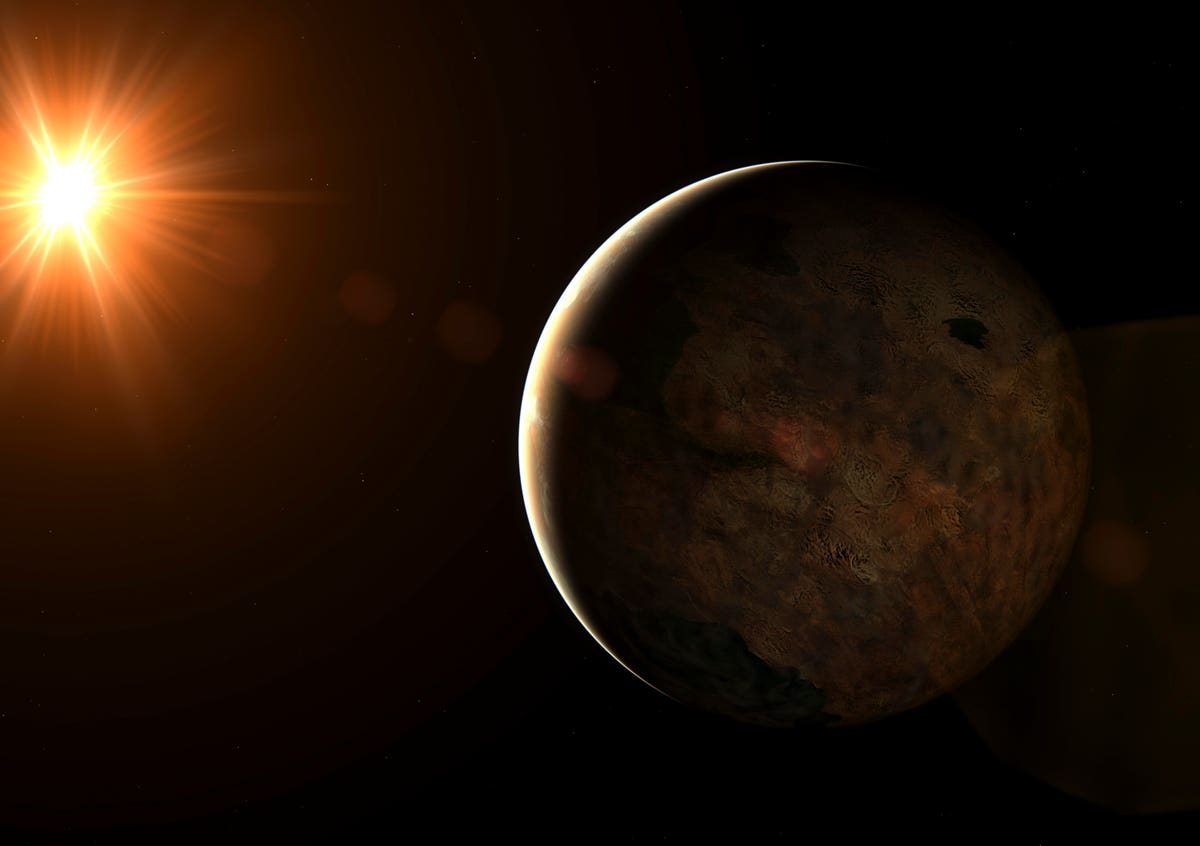
 www.forbes.com
www.forbes.com
Abstract
We report the discovery of a multi-planetary system transiting the M0 V dwarf HD 260655 (GJ 239, TOI-4599). The system consists of at least two transiting planets, namely HD 260655 b, with a period of 2.77 d, a radius of R$_b$ = 1.240$\pm$0.023 R$_\oplus$, a mass of M$_b$ = 2.14$\pm$0.34 M$_\oplus$, and a bulk density of $\rho_b$ = 6.2$\pm$1.0 g cm$^{-3}$, and HD 260655 c, with a period of 5.71 d, a radius of R$_c$ = 1.533$^{+0.051}_{-0.046}$ R$_\oplus$, a mass of M$_c$ = 3.09$\pm$0.48 M$_\oplus$, and a bulk density of $\rho_c$ = 4.7$^{+0.9}_{-0.8}$ g cm$^{-3}$. The planets were detected in transit by the TESS mission and confirmed independently with archival and new precise radial velocities obtained with the HIRES and CARMENES instruments since 1998 and 2016, respectively. At a distance of 10 pc, HD 260655 becomes the fourth closest known multi-transiting planet system after HD 219134, LTT 1445 A, and AU Mic. Due to the apparent brightness of the host star (J = 6.7 mag), both planets are among the most suitable rocky worlds known today for atmospheric studies with the JWST, both in transmission and emission.

Found: Two New Rocky, Earth-Sized Planets In Our Cosmic Backyard—And There Could Be More
At just 33 light years from Earth it’s one of the closest multi-planet star systems found so far.
 www.forbes.com
www.forbes.com
- Joined
- 21 January 2015
- Messages
- 12,156
- Reaction score
- 16,373
Two massive Jupiter-sized exoplanets discovered with TESSUsing NASA's Transiting Exoplanet Survey Satellite (TESS), an international team of astronomers has detected two new extrasolar planets. The newfound alien worlds, designated TOI-5152 b and TOI-5153 b, are the size of Jupiter but about three times more massive than the solar system's biggest planet. The finding is reported July 8 on the arXiv pre-print repository.
- Joined
- 21 January 2015
- Messages
- 12,156
- Reaction score
- 16,373
A Low-Mass Pre-Main-Sequence Eclipsing Binary in Lower Centaurus Crux Discovered with TESS
We report the discovery of 2M1222-57 as a low-mass, pre-main-sequence (PMS) eclipsing binary (EB) in the Lower Centaurus Crux (LCC) association for which, using Gaia parallaxes and proper motions with a neural-net age estimator, we determine an age of 16.2±2.2 Myr. The broadband spectral energy distribution (SED) shows clear excess at ~10 um indicative of a circumbinary disk, and new speckle-imaging observations reveal a faint, tertiary companion separated by ~100 AU. H-alpha emission is modulated on the orbital period, consistent with theoretical models of orbitally pulsed accretion streams reaching from the inner disk edge to the central stars. From a joint analysis of spectroscopically determined radial velocities and TESS light curves, together with additional tight constraints provided by the SED and the Gaia parallax, we measure masses for the eclipsing stars of 0.74 Msun and 0.67 Msun; radii of 0.98 Rsun and 0.94 Rsun; and effective temperatures of 3750 K and 3645 K. The masses and radii of both stars are measured to an accuracy of ~1%. The measured radii are inflated, and the temperatures suppressed, relative to predictions of standard PMS evolutionary models at the age of LCC; also, the Li abundances are ~2 dex less depleted than predicted by those models. However, models that account for the global and internal effects of surface magnetic fields are able to simultaneously reproduce the measured radii, temperatures, and Li abundances at an age of 17.0±0.5 Myr. Altogether, the 2M1222-57 system presents very strong evidence that magnetic activity in young stars alters both their global properties and the physics of their interiors.
We report the discovery of 2M1222-57 as a low-mass, pre-main-sequence (PMS) eclipsing binary (EB) in the Lower Centaurus Crux (LCC) association for which, using Gaia parallaxes and proper motions with a neural-net age estimator, we determine an age of 16.2±2.2 Myr. The broadband spectral energy distribution (SED) shows clear excess at ~10 um indicative of a circumbinary disk, and new speckle-imaging observations reveal a faint, tertiary companion separated by ~100 AU. H-alpha emission is modulated on the orbital period, consistent with theoretical models of orbitally pulsed accretion streams reaching from the inner disk edge to the central stars. From a joint analysis of spectroscopically determined radial velocities and TESS light curves, together with additional tight constraints provided by the SED and the Gaia parallax, we measure masses for the eclipsing stars of 0.74 Msun and 0.67 Msun; radii of 0.98 Rsun and 0.94 Rsun; and effective temperatures of 3750 K and 3645 K. The masses and radii of both stars are measured to an accuracy of ~1%. The measured radii are inflated, and the temperatures suppressed, relative to predictions of standard PMS evolutionary models at the age of LCC; also, the Li abundances are ~2 dex less depleted than predicted by those models. However, models that account for the global and internal effects of surface magnetic fields are able to simultaneously reproduce the measured radii, temperatures, and Li abundances at an age of 17.0±0.5 Myr. Altogether, the 2M1222-57 system presents very strong evidence that magnetic activity in young stars alters both their global properties and the physics of their interiors.
- Joined
- 21 January 2015
- Messages
- 12,156
- Reaction score
- 16,373
HD 20329b: An ultra-short-period planet around a solar-type star found by TESS
We used TESS light curves and HARPS-N spectrograph radial velocity measurements to establish the physical properties of the transiting exoplanet candidate found around the star HD 20329 (TOI-4524). We performed a joint fit of the light curves and radial velocity time series to measure the mass, radius, and orbital parameters of the candidate. We confirm and characterize HD 20329b, an ultra-short-period (USP) planet transiting a solar-type star. The host star (HD 20329, V=8.74 mag, J=7.5 mag) is characterized by its G5 spectral type with M=0.90±0.05 M, R=1.13±0.02 R, and Teff=5596±50 K; it is located at a distance d=63.68±0.29 pc. By jointly fitting the available TESS transit light curves and follow-up radial velocity measurements, we find an orbital period of 0.9261±(0.5×10−4) days, a planetary radius of 1.72±0.07 R⊕, and a mass of 7.42±1.09 M⊕, implying a mean density of ρp=8.06±1.53 g cm−3. HD 20329b joins the ∼30 currently known USP planets with radius and Doppler mass measurements.
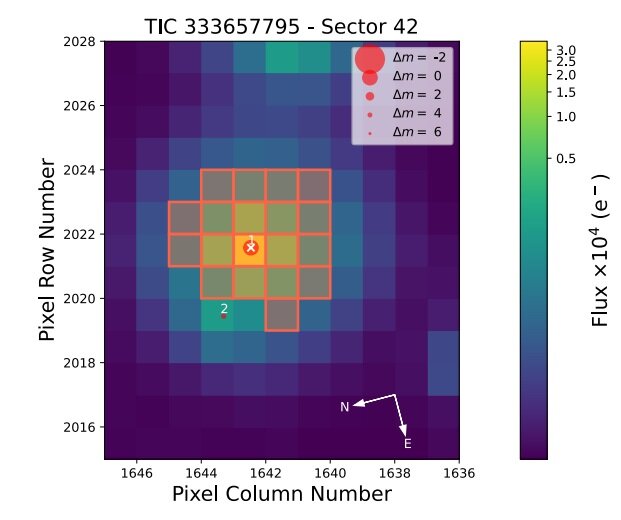
 phys.org
phys.org
We used TESS light curves and HARPS-N spectrograph radial velocity measurements to establish the physical properties of the transiting exoplanet candidate found around the star HD 20329 (TOI-4524). We performed a joint fit of the light curves and radial velocity time series to measure the mass, radius, and orbital parameters of the candidate. We confirm and characterize HD 20329b, an ultra-short-period (USP) planet transiting a solar-type star. The host star (HD 20329, V=8.74 mag, J=7.5 mag) is characterized by its G5 spectral type with M=0.90±0.05 M, R=1.13±0.02 R, and Teff=5596±50 K; it is located at a distance d=63.68±0.29 pc. By jointly fitting the available TESS transit light curves and follow-up radial velocity measurements, we find an orbital period of 0.9261±(0.5×10−4) days, a planetary radius of 1.72±0.07 R⊕, and a mass of 7.42±1.09 M⊕, implying a mean density of ρp=8.06±1.53 g cm−3. HD 20329b joins the ∼30 currently known USP planets with radius and Doppler mass measurements.

An ultra-short-period exoplanet discovered with TESS
Using NASA's Transiting Exoplanet Survey Satellite (TESS), an international team of astronomers has detected a new ultra-short-period exoplanet. The newfound alien world, designated HD 20329 b, orbits its host star in slightly less than one day. The finding was presented November 4 on arXiv.org.
- Joined
- 21 January 2015
- Messages
- 12,156
- Reaction score
- 16,373
Spinning up a Daze: TESS Uncovers a Hot Jupiter orbiting the Rapid-Rotator TOI-778
NASA's Transiting Exoplanet Survey Satellite (TESS) mission, has been uncovering a growing number of exoplanets orbiting nearby, bright stars. Most exoplanets that have been discovered by TESS orbit narrow-line, slow-rotating stars, facilitating the confirmation and mass determination of these worlds. We present the discovery of a hot Jupiter orbiting a rapidly rotating (vsin(i)=35.1±1.0km/s) early F3V-dwarf, HD115447 (TOI-778). The transit signal taken from Sectors 10 and 37 of TESS's initial detection of the exoplanet is combined with follow-up ground-based photometry and velocity measurements taken from Minerva-Australis, TRES, CORALIE and CHIRON to confirm and characterise TOI-778b. A joint analysis of the light curves and the radial velocity measurements yield a mass, radius, and orbital period for TOI-778b of 2.76+0.24−0.23Mjup, 1.370±0.043Rjup and ∼4.63 days, respectively. The planet orbits a bright (V=9.1mag) F3-dwarf with M=1.40±0.05Msun, R=1.70±0.05Rsun, and logg=4.05±0.17. We observed a spectroscopic transit of TOI-778b, which allowed us to derive a sky-projected spin-orbit angle of 18∘±11∘, consistent with an aligned planetary system. This discovery demonstrates the capability of smaller aperture telescopes such as Minerva-Australis to detect the radial velocity signals produced by planets orbiting broad-line, rapidly rotating stars.
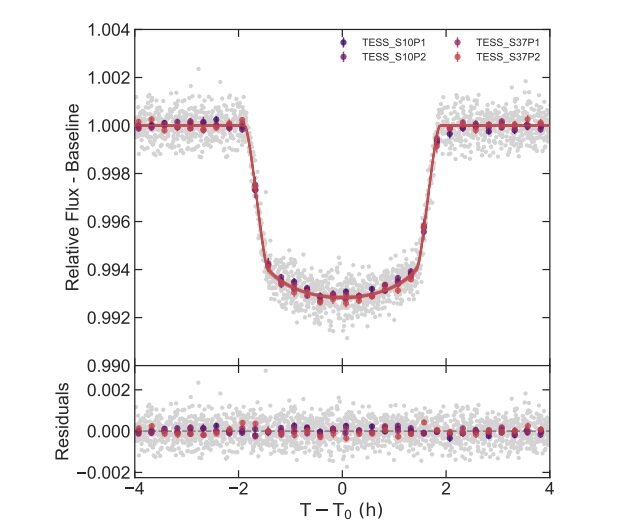
 phys.org
phys.org
NASA's Transiting Exoplanet Survey Satellite (TESS) mission, has been uncovering a growing number of exoplanets orbiting nearby, bright stars. Most exoplanets that have been discovered by TESS orbit narrow-line, slow-rotating stars, facilitating the confirmation and mass determination of these worlds. We present the discovery of a hot Jupiter orbiting a rapidly rotating (vsin(i)=35.1±1.0km/s) early F3V-dwarf, HD115447 (TOI-778). The transit signal taken from Sectors 10 and 37 of TESS's initial detection of the exoplanet is combined with follow-up ground-based photometry and velocity measurements taken from Minerva-Australis, TRES, CORALIE and CHIRON to confirm and characterise TOI-778b. A joint analysis of the light curves and the radial velocity measurements yield a mass, radius, and orbital period for TOI-778b of 2.76+0.24−0.23Mjup, 1.370±0.043Rjup and ∼4.63 days, respectively. The planet orbits a bright (V=9.1mag) F3-dwarf with M=1.40±0.05Msun, R=1.70±0.05Rsun, and logg=4.05±0.17. We observed a spectroscopic transit of TOI-778b, which allowed us to derive a sky-projected spin-orbit angle of 18∘±11∘, consistent with an aligned planetary system. This discovery demonstrates the capability of smaller aperture telescopes such as Minerva-Australis to detect the radial velocity signals produced by planets orbiting broad-line, rapidly rotating stars.

TESS detects new 'hot Jupiter' exoplanet orbiting a rapidly rotating star
Using NASA's Transiting Exoplanet Survey Satellite (TESS), an international team of astronomers has detected a new "hot Jupiter" exoplanet. The newfound alien world, estimated to be nearly three times as massive as Jupiter, orbits a rapidly rotating star known as TOI-778. The finding is reported...
- Joined
- 21 January 2015
- Messages
- 12,156
- Reaction score
- 16,373
TOI-3984 A b and TOI-5293 A b: two temperate gas giants transiting mid-M dwarfs in wide binary systems
We confirm the planetary nature of two gas giants discovered by TESS to transit M dwarfs with stellar companions at wide separations. TOI-3984 A (J=11.93) is an M4 dwarf hosting a short-period (4.353326±0.000005 days) gas giant (Mp=0.14±0.03 MJ and Rp=0.71±0.02 RJ) with a wide separation white dwarf companion. TOI-5293 A (J=12.47) is an M3 dwarf hosting a short-period (2.930289±0.000004 days) gas giant (Mp=0.54±0.07 MJ and Rp=1.06±0.04 RJ) with a wide separation M dwarf companion. We characterize both systems using a combination of ground-based and space-based photometry, speckle imaging, and high-precision radial velocities from the Habitable-zone Planet Finder and NEID spectrographs. TOI-3984 A b (Teq=563±15 K and TSM=138+29−27) and TOI-5293 A b (Teq=675+42−30 K and TSM=92±14) are two of the coolest gas giants among the population of hot Jupiter-sized gas planets orbiting M dwarfs and are favorable targets for atmospheric characterization of temperate gas giants and three-dimensional obliquity measurements to probe system architecture and migration scenarios.
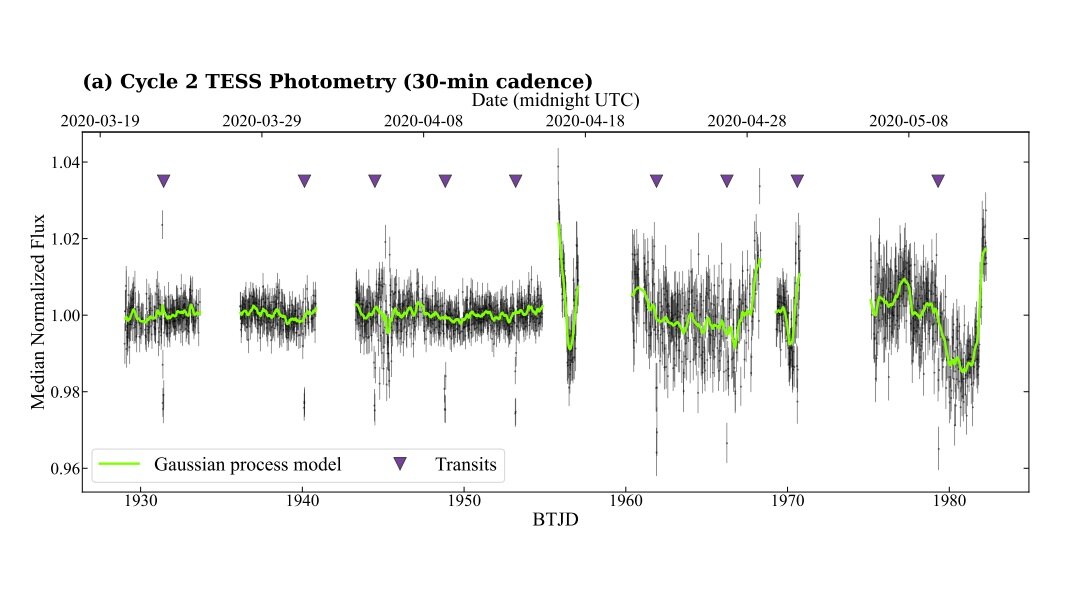
 phys.org
phys.org
We confirm the planetary nature of two gas giants discovered by TESS to transit M dwarfs with stellar companions at wide separations. TOI-3984 A (J=11.93) is an M4 dwarf hosting a short-period (4.353326±0.000005 days) gas giant (Mp=0.14±0.03 MJ and Rp=0.71±0.02 RJ) with a wide separation white dwarf companion. TOI-5293 A (J=12.47) is an M3 dwarf hosting a short-period (2.930289±0.000004 days) gas giant (Mp=0.54±0.07 MJ and Rp=1.06±0.04 RJ) with a wide separation M dwarf companion. We characterize both systems using a combination of ground-based and space-based photometry, speckle imaging, and high-precision radial velocities from the Habitable-zone Planet Finder and NEID spectrographs. TOI-3984 A b (Teq=563±15 K and TSM=138+29−27) and TOI-5293 A b (Teq=675+42−30 K and TSM=92±14) are two of the coolest gas giants among the population of hot Jupiter-sized gas planets orbiting M dwarfs and are favorable targets for atmospheric characterization of temperate gas giants and three-dimensional obliquity measurements to probe system architecture and migration scenarios.

Two new gas giant exoplanets discovered with TESS
Astronomers report the detection of two new gas giant exoplanets using NASA's Transiting Exoplanet Survey Satellite (TESS). The newfound alien worlds, designated TOI-3984A b and TOI-5293A b, have very short orbital periods. The discovery was detailed in a paper published February 15 on the...
- Joined
- 21 January 2015
- Messages
- 12,156
- Reaction score
- 16,373
LHS 475 b: A Venus-sized Planet Orbiting a Nearby M Dwarf
Based on photometric observations by TESS, we present the discovery of a Venus-sized planet transiting LHS 475, an M3 dwarf located 12.5 pc from the Sun. The mass of the star is 0.274±0.015 MSun. The planet, originally reported as TOI 910.01, has an orbital period of 2.0291025±0.0000020 days and an estimated radius of 0.955±0.053 REarth. We confirm the validity and source of the transit signal with MEarth ground-based follow-up photometry of five individual transits. We present radial velocity data from CHIRON that rule out massive companions. In accordance with the observed mass-radius distribution of exoplanets as well as planet formation theory, we expect this Venus-sized companion to be terrestrial, with an estimated RV semi-amplitude close to 1.0 m/s. LHS 475 b is likely too hot to be habitable but is a suitable candidate for emission and transmission spectroscopy.
Based on photometric observations by TESS, we present the discovery of a Venus-sized planet transiting LHS 475, an M3 dwarf located 12.5 pc from the Sun. The mass of the star is 0.274±0.015 MSun. The planet, originally reported as TOI 910.01, has an orbital period of 2.0291025±0.0000020 days and an estimated radius of 0.955±0.053 REarth. We confirm the validity and source of the transit signal with MEarth ground-based follow-up photometry of five individual transits. We present radial velocity data from CHIRON that rule out massive companions. In accordance with the observed mass-radius distribution of exoplanets as well as planet formation theory, we expect this Venus-sized companion to be terrestrial, with an estimated RV semi-amplitude close to 1.0 m/s. LHS 475 b is likely too hot to be habitable but is a suitable candidate for emission and transmission spectroscopy.
- Joined
- 21 January 2015
- Messages
- 12,156
- Reaction score
- 16,373
Using NASA's Transiting Exoplanet Survey Satellite (TESS), astronomers have discovered a new "warm Jupiter" exoplanet. The newfound alien world, designated TOI-1859 b, orbits its parent star on an eccentric and misaligned orbit. The finding is reported in a paper published May 25 on the arXiv preprint server.
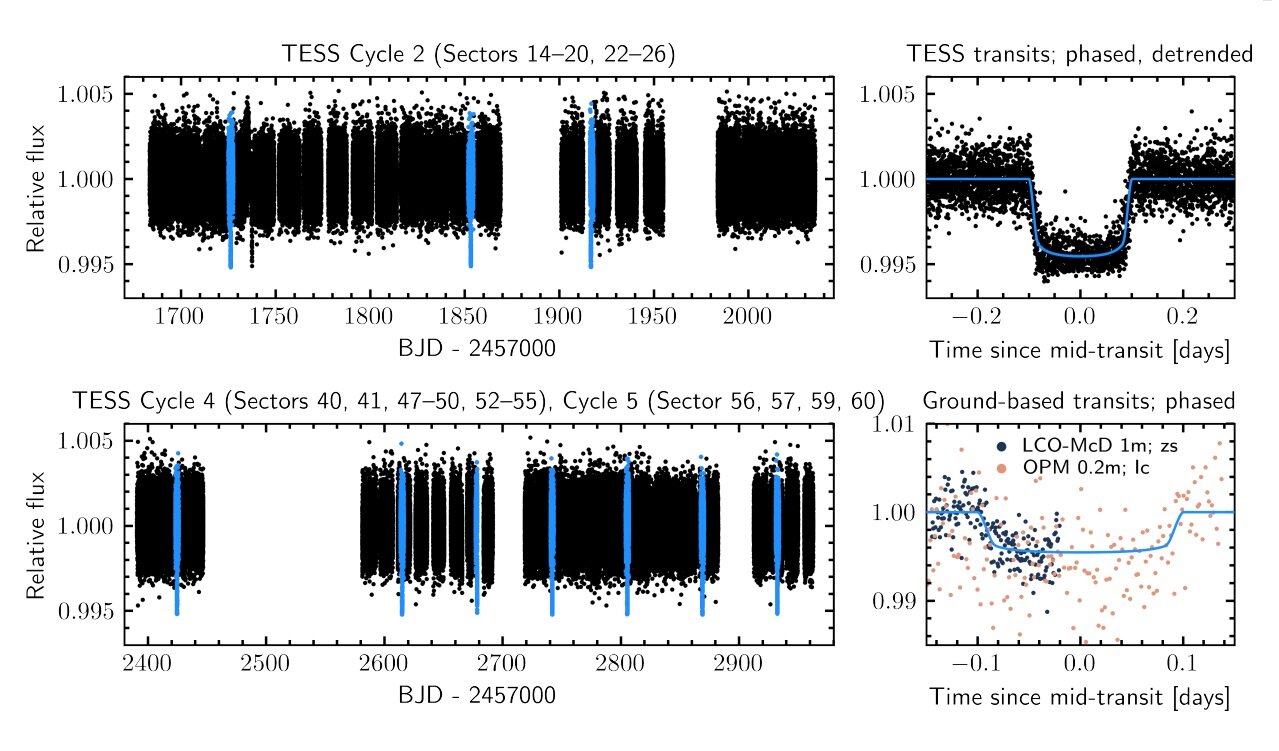
Astronomers discover a new 'warm Jupiter' on an eccentric and misaligned orbit
Using NASA's Transiting Exoplanet Survey Satellite (TESS), astronomers have discovered a new "warm Jupiter" exoplanet. The newfound alien world, designated TOI-1859 b, orbits its parent star on an eccentric and misaligned orbit. The finding is reported in a paper published May 25 on the arXiv...
Related paper:
- Joined
- 21 January 2015
- Messages
- 12,156
- Reaction score
- 16,373
NASA’s TESS Returns to Science Operations
The headshot image of Jeanette Kazmierczak
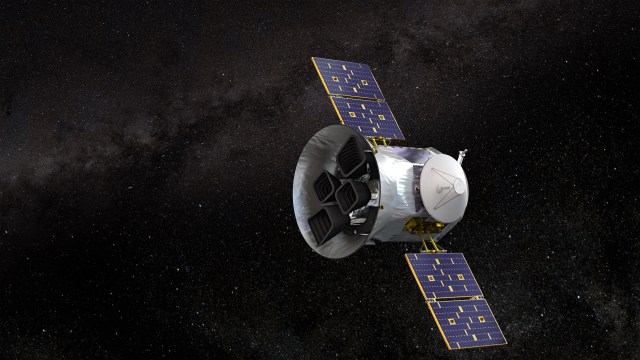
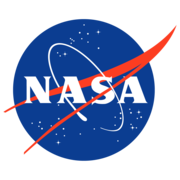 science.nasa.gov
science.nasa.gov
The headshot image of Jeanette Kazmierczak

NASA’s TESS Returns to Science Operations - NASA Science
NASA’s TESS (Transiting Exoplanet Survey Satellite) returned to science operations May 3 and is once again making observations. The satellite went into safe mode April 23 following a separate period of down time earlier that month. The operations team determined this latest safe mode was...
- Joined
- 21 January 2015
- Messages
- 12,156
- Reaction score
- 16,373
- Joined
- 21 January 2015
- Messages
- 12,156
- Reaction score
- 16,373
TESS returns to science operations. The reason it went into safe mode again was actually an issue left over from when it previously went into safe mode recently.

 science.nasa.gov
science.nasa.gov

NASA’s TESS Returns to Science Operations - NASA Science
NASA’s TESS (Transiting Exoplanet Survey Satellite) returned to science operations May 3 and is once again making observations. The satellite went into safe mode April 23 following a separate period of down time earlier that month. The operations team determined this latest safe mode was...
Similar threads
-
Pandemic may delay several NASA astrophysics missions
- Started by Flyaway
- Replies: 0
-
-
NASA Selects Four Possible Missions to Study the Secrets of the Solar System
- Started by Flyaway
- Replies: 34
-
NASA Selects Two Missions to Explore the Early Solar System
- Started by Flyaway
- Replies: 187
-
NASA Approves Heliophysics Missions to Explore Sun, Earth’s Aurora
- Started by Flyaway
- Replies: 0
